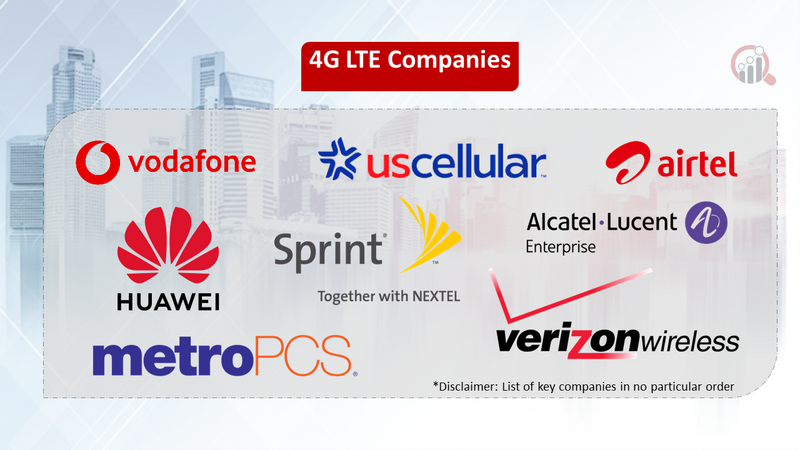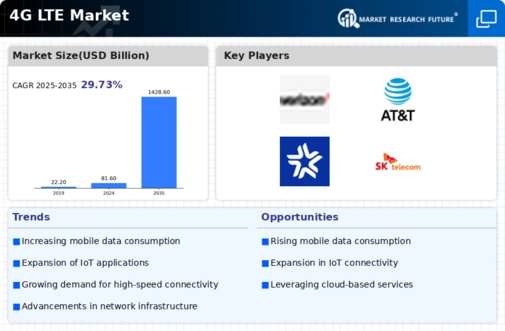Top Industry Leaders in the 4G LTE Market

Competitive Landscape of the 4G LTE Market: A Comprehensive Analysis
The 4G LTE market, once a vibrant hub of technological advancement, now navigates a maturing landscape. Despite its slower growth, understanding the competitive landscape remains crucial for established players and aspiring entrants alike. This analysis delves into the key players, their strategies, market share determinants, and the influx of new players, shedding light on current investment trends.
Key Players:
-
Verizon Wireless (U.S.)
-
AT&T (U.S.)
-
Sprint Nextel (U.S.)
-
MetroPCS (U.S.)
-
U.S. Cellular (U.S.)
-
S.K. Telecom (South Korea)
-
Alcatel-Lucent (France)
-
Bharti Airtel Ltd.(India)
-
LM Ericsson (Sweden)
-
Huawei Technologies Co. Ltd. (China)
-
Vodafone Group PLC (U.K.)
Factors for Market Share Analysis:
-
Network Coverage and Quality: Availability, speed, and reliability of LTE networks are paramount. MNOs with wider coverage and superior network performance attract and retain customers.
-
Spectrum Availability and Pricing: Access to radio spectrum for LTE deployment is crucial. Governments and regulatory bodies play a significant role in spectrum allocation and pricing, impacting market dynamics.
-
Device Affordability and Variety: The availability of affordable and diverse LTE-enabled devices influences market penetration. Manufacturers offering competitive pricing and cateri ng to different consumer segments gain an edge.
-
Service Differentiation and Pricing: MNOs compete through unique data plans, value-added services, and targeted marketing campaigns. Competitive pricing strategies and innovative service offerings attract customers.
New and Emerging Companies:
-
Satellite-based LTE Providers: Companies like Lynk and AST SpaceMobile are entering the market, offering LTE connectivity in remote areas through satellite technology. This opens up new market segments for underserved regions.
-
Low-Power Wide-Area Networks (LPWAN) Providers: Companies like Sigfox and LoRaWAN are deploying LPWAN technologies that offer low-cost, long-range connectivity for Internet of Things (IoT) applications. This can potentially disrupt the traditional LTE market in specific segments.
Current Investment Trends:
-
Focus on 5G Migration: MNOs and infrastructure providers are shifting investments towards 5G infrastructure rollout, aiming to capitalize on the next generation of mobile technology. This can lead to consolidation in the 4G market.
-
Network Optimization and Cost Reduction: Existing players are focusing on optimizing their 4G networks to improve efficiency and reduce operational costs. This involves upgrades and software optimization to squeeze maximum value from existing infrastructure.
-
Emerging Technologies and Partnerships: Investments are increasing in areas like network slicing, edge computing, and artificial intelligence integration with 4G networks. Partnerships and collaborations are crucial for these advancements.
Latest Company Updates:
- October 26, 2023: T-Mobile US announces the completion of its nationwide 600 MHz spectrum deployment, aiming to boost 4G LTE coverage and capacity in rural areas.
- December 12, 2023: India's Bharti Airtel achieves 4G coverage in all 22 telecom circles, marking a significant milestone in rural connectivity.
- January 3, 2024: Nokia and Ericsson announce collaboration to develop advanced network optimization solutions for 4G and 5G networks.










